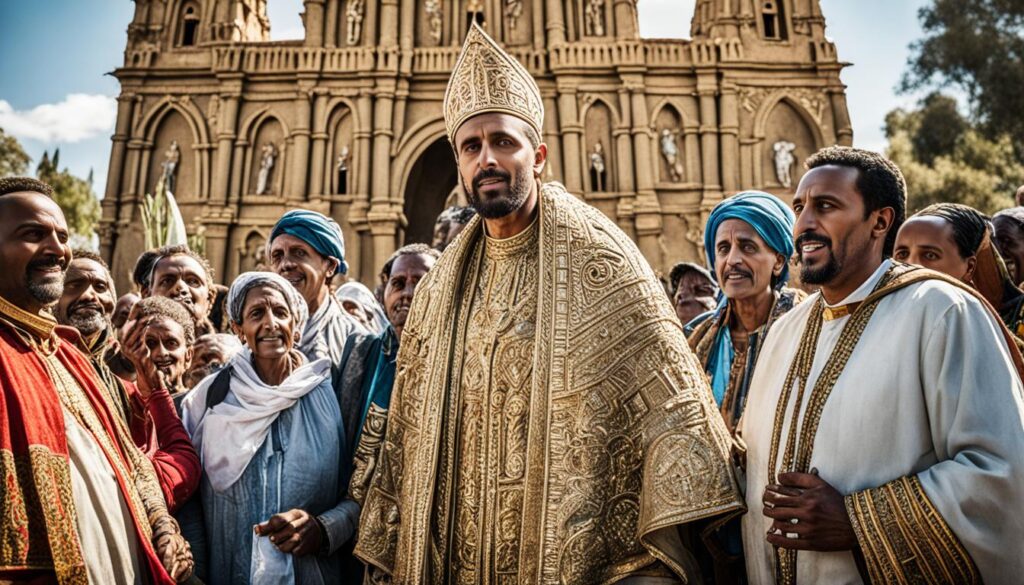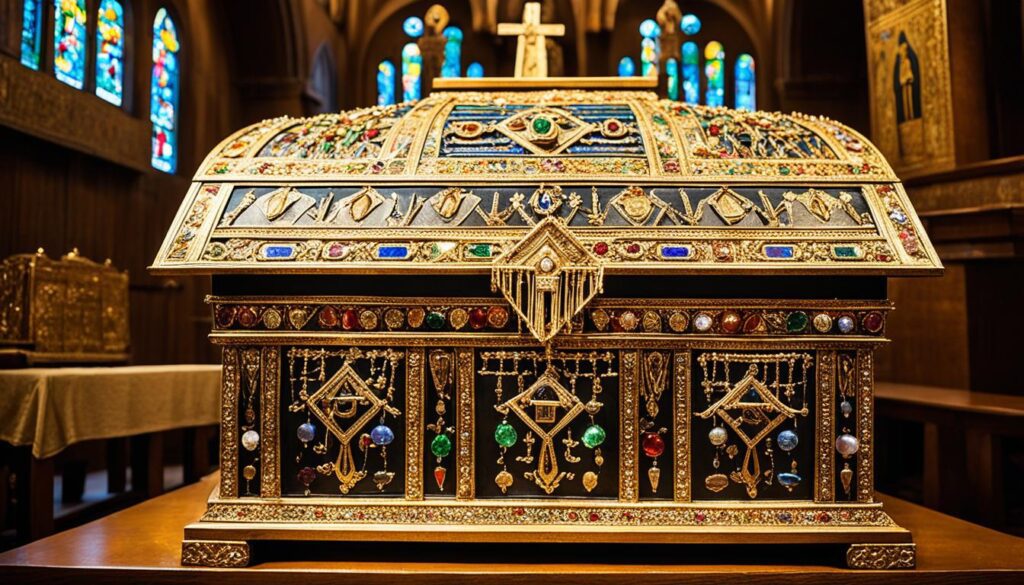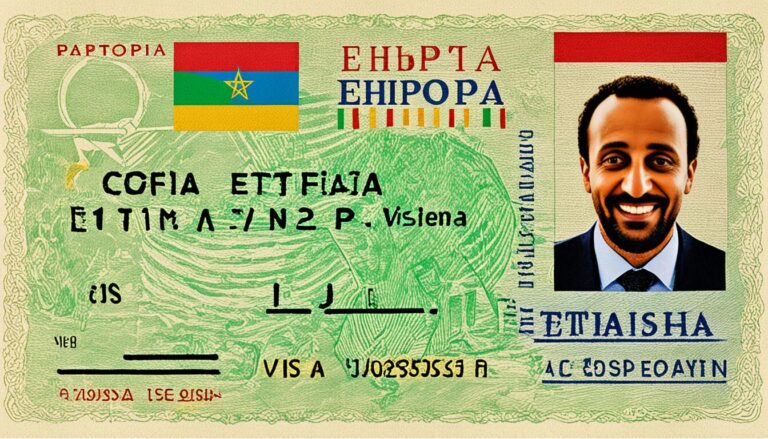Does Ethiopia Have the Ark of the Covenant?
Did you know that according to Ethiopian tradition, the Ark of the Covenant, the sacred container believed to hold the tablets of the Ten Commandments, is said to be preserved in Ethiopia?
For centuries, the belief in the presence of the Ark of the Covenant in Ethiopia has captivated the imagination of people around the world. It is a subject of both fascination and controversy, as experts and religious scholars debate its authenticity and historical accuracy.
In this article, we will delve into the legend, historical accounts, restricted access, and the significance of the Ark of the Covenant in Ethiopian culture, providing a comprehensive overview of this enduring mystery.
Key Takeaways:
- According to Ethiopian tradition, the Ark of the Covenant is believed to be preserved in the Church of Our Lady Mary of Zion in Aksum.
- The legend states that the Ark was brought to Ethiopia over 3,000 years ago by Menelik, the son of the Queen of Sheba and King Solomon of Israel.
- Historical accounts suggest that the Ark housed in the church is a replica, not the original.
- Access to the Ark is restricted, with only the designated guardian allowed to see it.
- The belief in the presence of the Ark in Ethiopia holds great significance for the Ethiopian Orthodox Church and reinforces the country’s religious and cultural heritage.
The Legend of the Ark’s Journey to Ethiopia
According to Ethiopian religious tradition, the Ark of the Covenant has a fascinating history that connects it to the country of Ethiopia. Legend has it that over 3,000 years ago, Menelik, the son of the Queen of Sheba and King Solomon of Israel, brought the ark to Ethiopia. The story goes that Menelik stole the ark from Jerusalem and transported it to the ancient city of Aksum, where it has remained ever since in the Church of Our Lady Mary of Zion.
This captivating legend has been passed down through generations and holds great significance in Ethiopian religious beliefs. It strengthens the connection between Ethiopia, King Solomon, and the Queen of Sheba, weaving together a rich tapestry of history and spirituality. The Ark of the Covenant’s journey to Ethiopia is a cherished part of Ethiopian culture and an integral aspect of the country’s religious identity.
Lorem ipsum dolor sit amet, consectetur adipiscing elit. Sed non blandit justo. Ut dapibus condimentum ligula, id porttitor quam bibendum ac. Praesent sed ultricies turpis, nec luctus mauris. Etiam sollicitudin magna nisi, sit amet mollis nunc vulputate sed. Nulla id dictum erat. In molestie porta tellus, sed dictum magna condimentum at. Nulla facilisi. Sed quis massa ac nunc scelerisque placerat. Fusce et metus nec tortor feugiat elementum.
Lorem ipsum dolor sit amet, consectetur adipiscing elit. Sed non blandit justo. Ut dapibus condimentum ligula, id porttitor quam bibendum ac.
The Ark’s Significance in Ethiopian History
In Ethiopian culture, the presence of the Ark of the Covenant symbolizes the deep-rooted spirituality and historical connection of the Ethiopian Orthodox Church to biblical events. The belief in the ark’s presence in Ethiopia is a testament to the country’s religious heritage and reinforces its identity as a sacred land.
Lorem ipsum dolor sit amet, consectetur adipiscing elit. Sed non blandit justo. Ut dapibus condimentum ligula, id porttitor quam bibendum ac. Praesent sed ultricies turpis, nec luctus mauris. Etiam sollicitudin magna nisi, sit amet mollis nunc vulputate sed. Nulla id dictum erat. In molestie porta tellus, sed dictum magna condimentum at. Nulla facilisi. Sed quis massa ac nunc scelerisque placerat. Fusce et metus nec tortor feugiat elementum.
- Pilgrimages are made to the Church of Our Lady Mary of Zion in Aksum, where the ark is believed to reside.
- The ark is regarded as a sacred relic and is revered by Ethiopian Orthodox Christians.
- Its presence serves as a spiritual center for worship and plays a vital role in religious ceremonies and traditions.
Lorem ipsum dolor sit amet, consectetur adipiscing elit. Sed non blandit justo. Ut dapibus condimentum ligula, id porttitor quam bibendum ac. Praesent sed ultricies turpis, nec luctus mauris. Etiam sollicitudin magna nisi, sit amet mollis nunc vulputate sed. Nulla id dictum erat. In molestie porta tellus, sed dictum magna condimentum at. Nulla facilisi. Sed quis massa ac nunc scelerisque placerat. Fusce et metus nec tortor feugiat elementum.
Historical Accounts and Debunking the Myth

According to historical records, the story of the Ark of the Covenant in Ethiopia traces back to the late Middle Ages, specifically around the 15th century. However, a renowned scholar named Edward Ullendorff provided accounts that challenge the authenticity of the Ark in Ethiopia.
“During World War II, I had the opportunity to witness what is claimed to be the Ark of the Covenant inside the Church of Our Lady Mary of Zion. However, upon close examination, it became clear that the artifact inside was not the original Ark but rather a replica,” Ullendorff stated.
His observations indicate that the model he encountered did not possess ancient characteristics and did not differ from other Ethiopian church arks.
| Original Ark of the Covenant | Replica Inside the Church of Our Lady Mary of Zion |
|---|---|
| Thought to have been lost or destroyed | A replica created during the late Middle Ages |
| Contains the stone tablets of the Ten Commandments | Not confirmed to contain the Ten Commandments |
| Ancient and unique artifact | A model similar to other Ethiopian church arks |
The Guardians and Limited Access
In accordance with Ethiopian religious tradition, only the designated guardian is granted access to the Ethiopian Ark of the Covenant. These guardians are highly trained individuals whose sole responsibility is to protect the sacred relic. Access to the chapel housing the ark is strictly restricted to a select few members of the Ethiopian Christian church hierarchy, adding an air of mystery and reverence to its presence.
Historians and archaeologists have long been intrigued by the Ethiopian Ark of the Covenant, yearning to examine and study its authenticity. However, the limited access granted to the cherished artifact has hindered any independent confirmation or scrutiny. Consequently, the ark remains shrouded in secrecy and subject to speculation.
While the restricted access prevents external validation, it also serves as a safeguard, preserving the sacred nature of the Ethiopian Ark of the Covenant. The guardians and religious authorities hold the responsibility of upholding its significance and ensuring its protection, keeping it a revered symbol within Ethiopian culture and religious practices.
The Significance of the Ark in Ethiopian Culture
The belief in the presence of the Ark of the Covenant in Ethiopia holds immense significance for the Ethiopian Orthodox Church and its followers. It forms an integral part of the country’s religious and cultural heritage, intertwining biblical narratives with Ethiopian identity.
According to Ethiopian legend, the Ark was brought to Ethiopia by Menelik, the son of the Queen of Sheba and King Solomon of Israel. This legendary account reinforces the connection between Ethiopia and ancient biblical events, imbuing the Ark with profound meaning.
Within Ethiopian culture, the Ark is seen as a symbol of divine presence and protection. Its purported presence in Ethiopia enhances the country’s spiritual stature and reinforces its historical ties to biblical narratives. The Ethiopian Ark of the Covenant serves as a testament to the enduring faith and religious practices that have shaped the country’s identity for centuries.
The Significance of the Ark in Ethiopian Culture

The belief in the presence of the Ark of the Covenant in Ethiopia holds great significance for the Ethiopian Orthodox Church and its followers. It ties into the country’s rich religious history and reinforces the connection between Ethiopia, King Solomon, and the Queen of Sheba. The presence of the ark in Ethiopia is seen as a testament to the country’s religious and cultural heritage.
The Ethiopian Orthodox Church places great importance on the Ark of the Covenant and considers it a symbol of their faith and identity. The belief that the ark is housed in the Church of Our Lady Mary of Zion in Aksum resonates deeply with the Ethiopian people, shaping their religious practices and customs. The ark is believed to be a physical representation of the divine presence and is revered as a sacred artifact.
The significance of the ark extends beyond religious beliefs. It also plays a crucial role in Ethiopian history and national pride. The connection between Ethiopia, King Solomon, and the Queen of Sheba, as depicted in the legend of the ark’s journey, reinforces Ethiopia’s position as an ancient and culturally rich civilization. This belief has persisted for centuries, passed down through generations, and continues to be celebrated in Ethiopian culture.
Conclusion
The question of whether Ethiopia truly has the Ark of the Covenant remains a subject of debate and speculation. While there is a religious legend and belief that the ark is in Ethiopia, historical accounts suggest that what is housed in the Church of Our Lady Mary of Zion is a replica.
The significance of the ark in Ethiopian culture and religious tradition, however, cannot be ignored. The belief in its presence has shaped Ethiopian identity and plays a vital role in the country’s religious practices. It serves as a symbol of heritage and connection to the biblical history of Ethiopia, reinforcing the country’s deep-rooted faith.
Regardless of the authenticity of the ark, its cultural significance remains strong. The stories and legends surrounding its journey from Jerusalem to Aksum have been passed down through generations, contributing to Ethiopia’s rich religious and historical narrative. Whether the ark is a physical artifact or a spiritual symbol, it continues to inspire devotion and reverence among the Ethiopian people.






